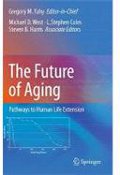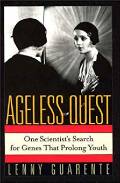Coleen Murphy et al. find genes downstream of daf-16 which regulate aging in C.elegans nematodes
 Who:Coleen Murphy, Steven McCarroll, Cornelia Bargmann, Andrew Fraser, Ravi Kamath, Julie Ahringer, Hao Li, Cynthia Kenyon
Who:Coleen Murphy, Steven McCarroll, Cornelia Bargmann, Andrew Fraser, Ravi Kamath, Julie Ahringer, Hao Li, Cynthia KenyonWhen:July 17, 2003
Methods: By comparing transcriptional profiles of long lived c.elegans mutants vs. wild-type and identifying genes that were upregulated or downregulated
Institution: University of California - San Francisco
Where: San Francisco, California, U.S.A
While serving a post-doc with Cynthia Kenyon, Coleen Murphy et. al, discovered genes downstream of daf-16 and daf-2 which regulate aging in C.elegans nematodes.
Murphy's approach compared long-lived mutants of C.elegans vs. wild type and collected gene expression data from the animals of various ages to also compare expression of different genes throughout development. 60 microarrays were collected in total and combined into a single set for hierarchical clustering and comparative analysis.
The results found two groups of genes which appear to play a role in C.elegans longevity. The first set of genes appeared to function in terms of repairing oxidative and other macromolecular damage. The second set encoded antimicrobial lysosomes. The lysosomes could help to prevent bacterial packing which has been shown to increase with C.elegans age, and eventually kills the nematodes.
In an additional analysis, Murphy then used the data to look for short sequences occurring in a statistical distribution that suggests they code meaningful information. Searching for sequences in this way is known as the Mobydick algorithm. The anaylsis uncovered over-represented expression of sequence T(G/A)TTTAC, which is known to be bound to daf-16 in vitro. A further sequence CTTATCA was found, which suggests daf-16 could be expressed in new unidentified pathways.
Murphy concludes that the insulin/IGF-I signalling pathway regulates aging in C.elegans via several global regulators, involving many genes.
"Longevity must have evolved not just once, but many times. Insect lifespans range from a few weeks to several years, and those of mammals (and also birds) range from a few years to a century."
The study also found new unidentified proteins regulated by daf-16, opening doors for new potential regulators. In addition, the study confirmed that daf-16 encodes proteins protecting or reparing cells from oxidative/macromolecular damage.
"Thus our
study provides strong support for the theory that genes that increase
resistance to environmental stress contribute to longevity."
Finally, Murphy adds her own evolutionary theory to aging, stating that since the IGF system can independently regulate multiple life history functions: longevity, reproduction, states of dipause, and body size, it is favorable to foster evolution into environmental niches.
References
- Coleen T. Murphy, Steven A. McCarroll, Cornelia I. Bargmann, Andrew Fraser, Ravi S. Kamath, Julie Ahringer, Hao Li, Cynthia Kenyon. Genes that act downstream of DAF-16 to influence the lifespan of Caenorhabditis elegans. Nature 424, 277-283 (17 July 2003) | doi:10.1038




